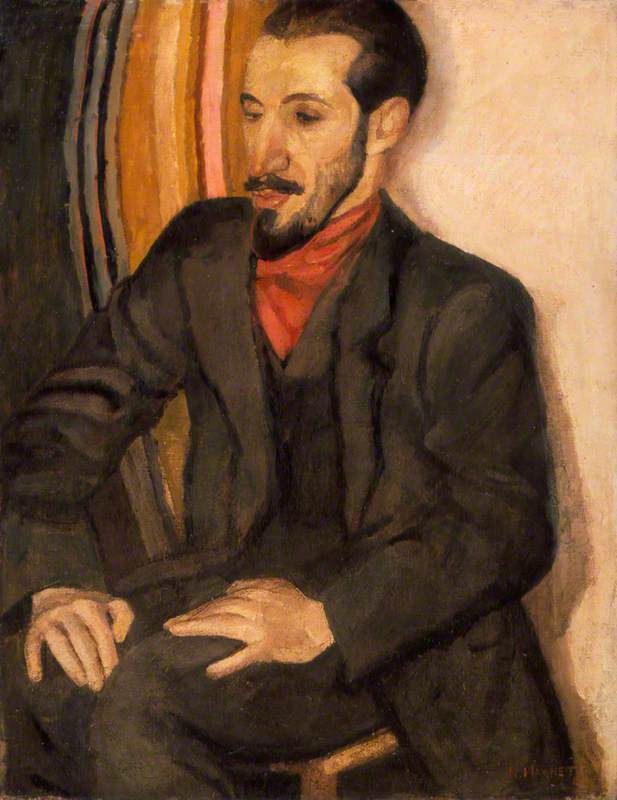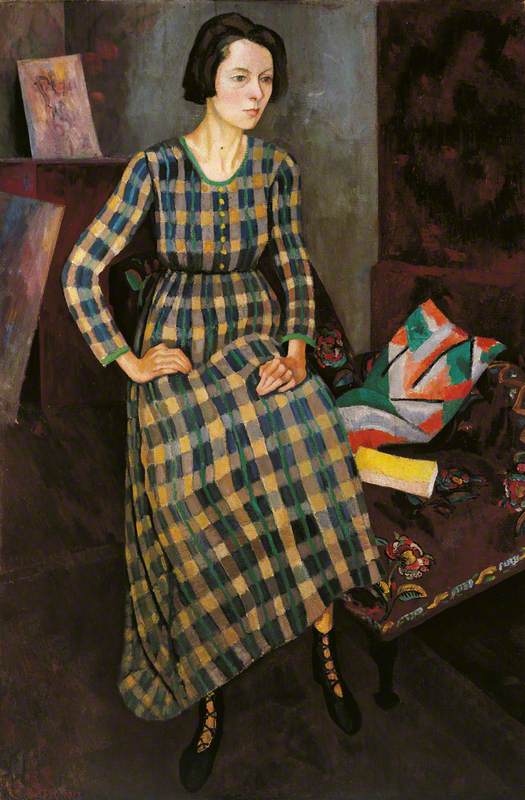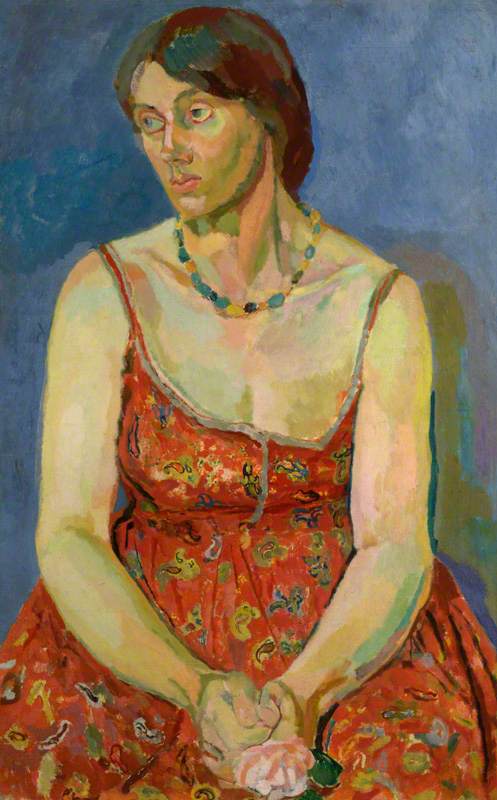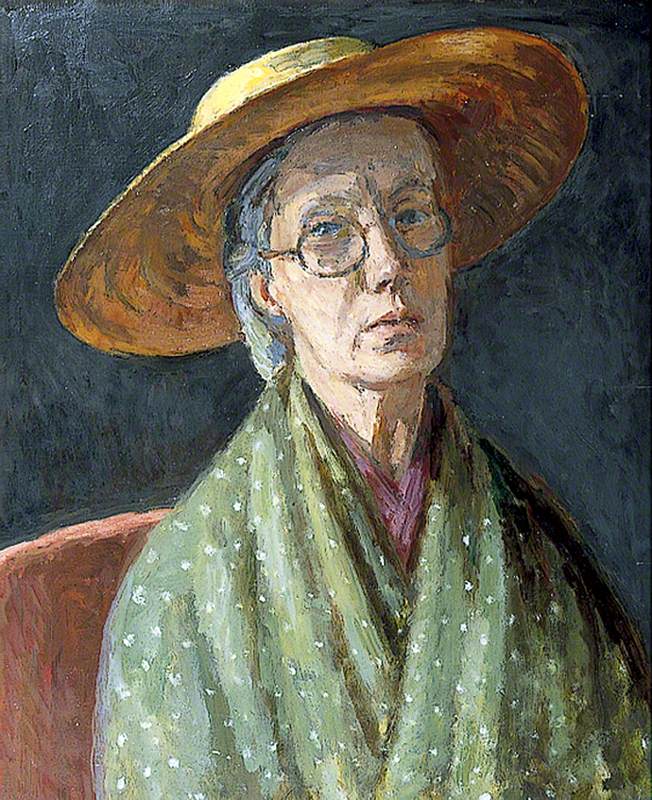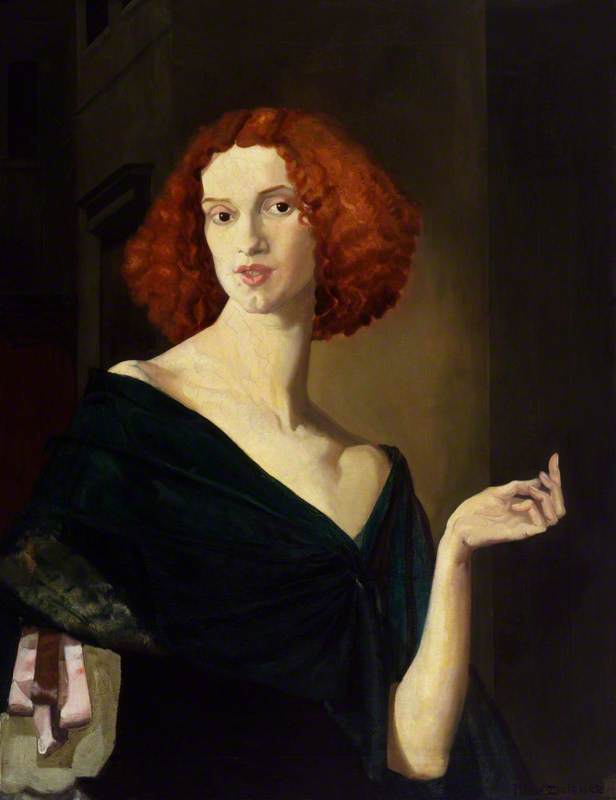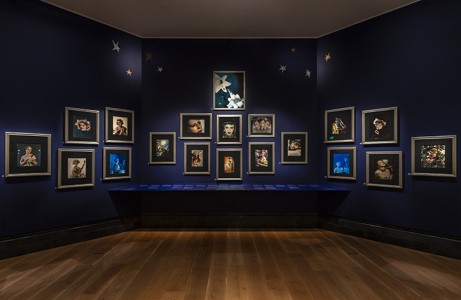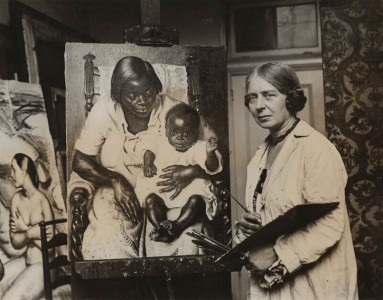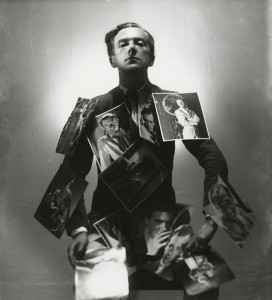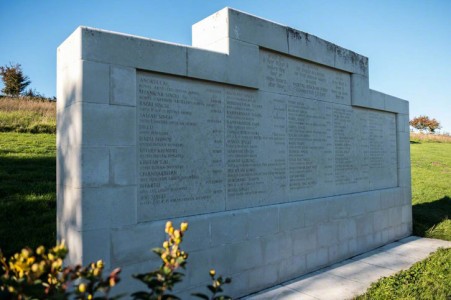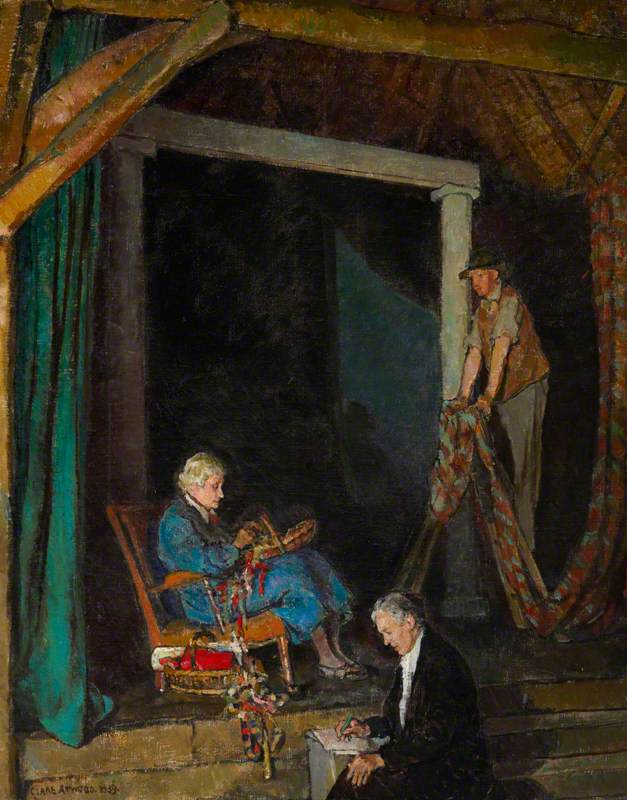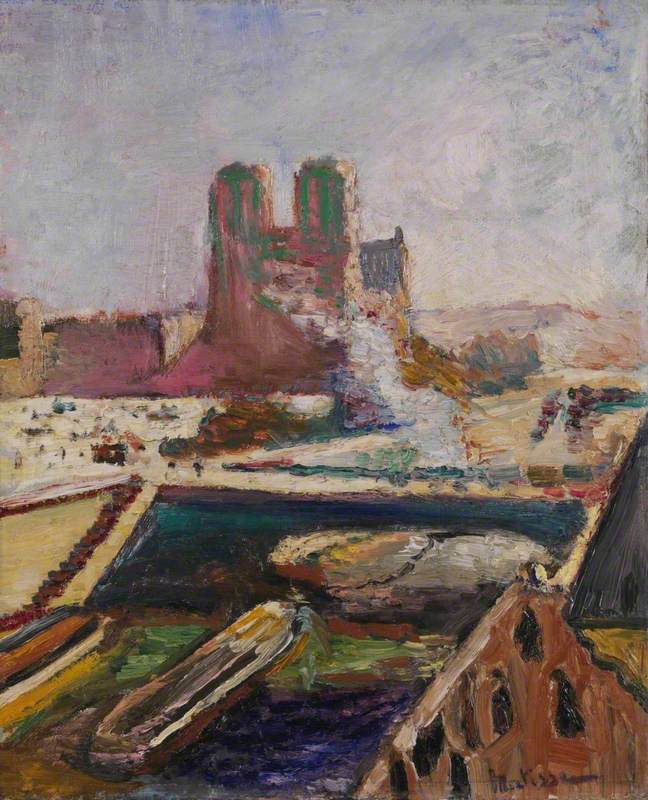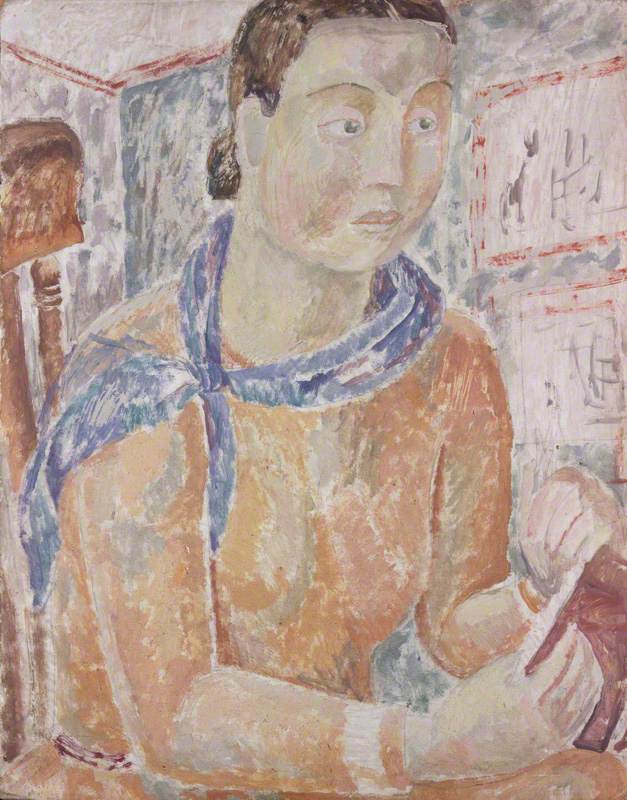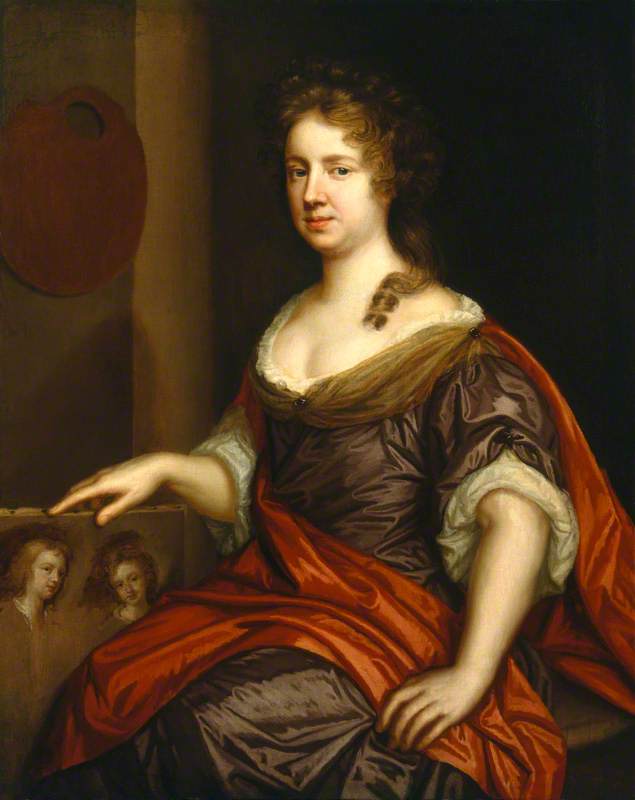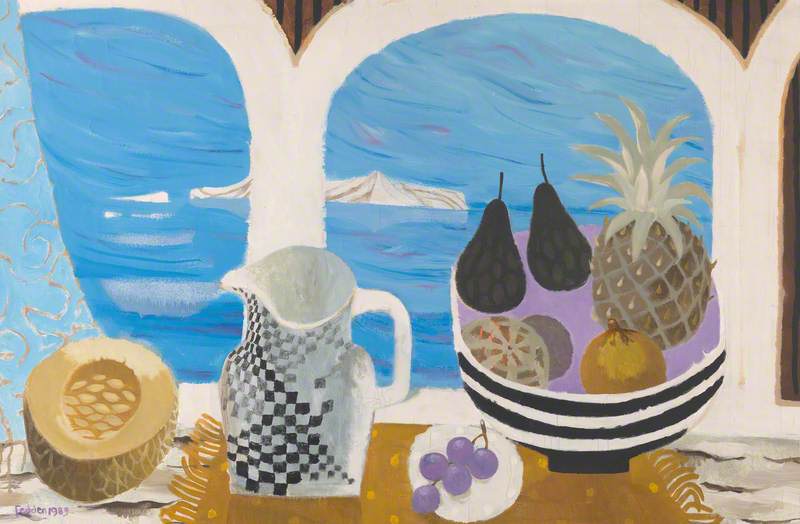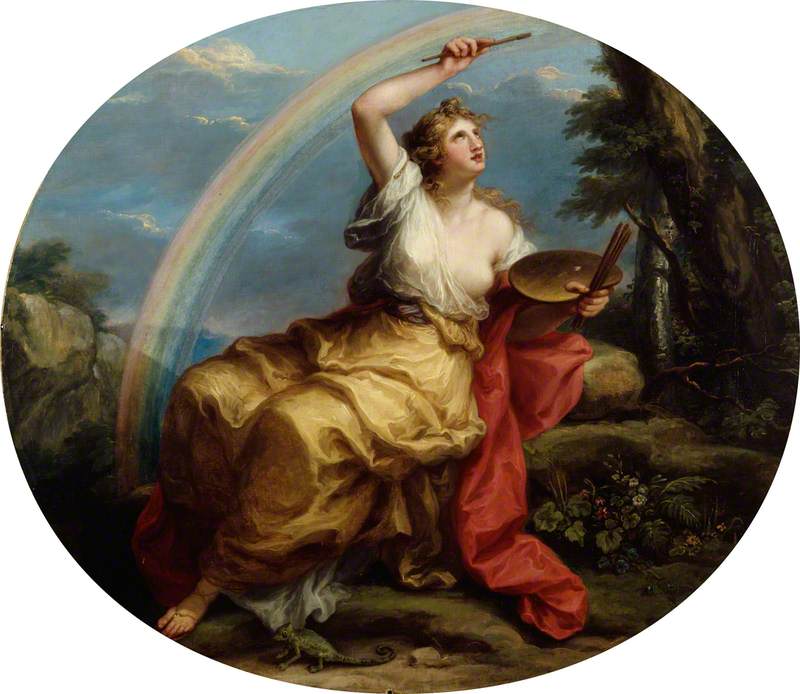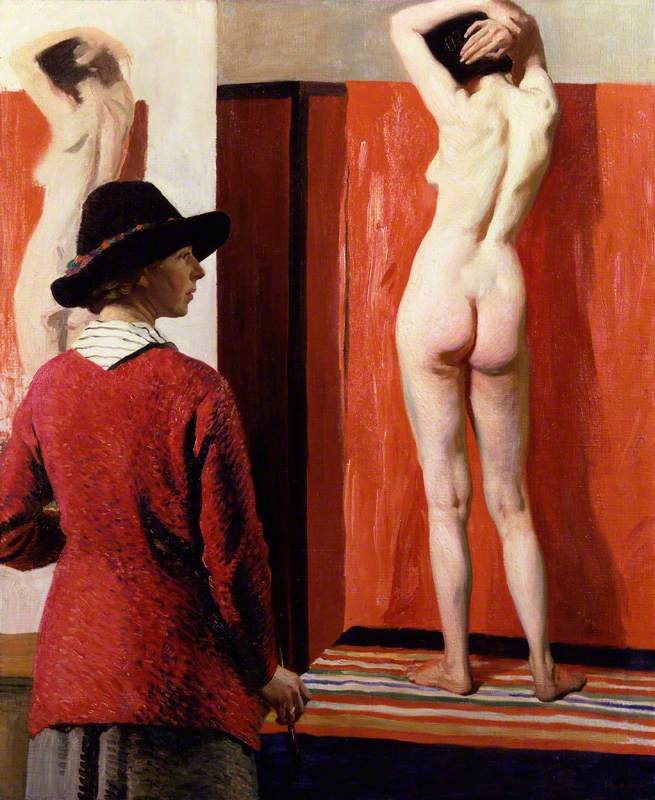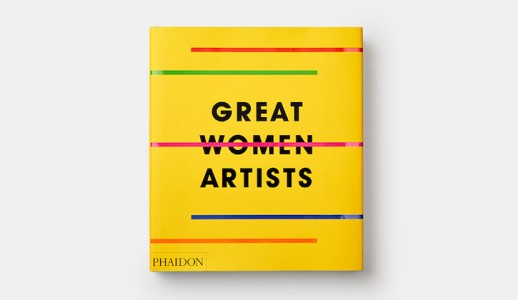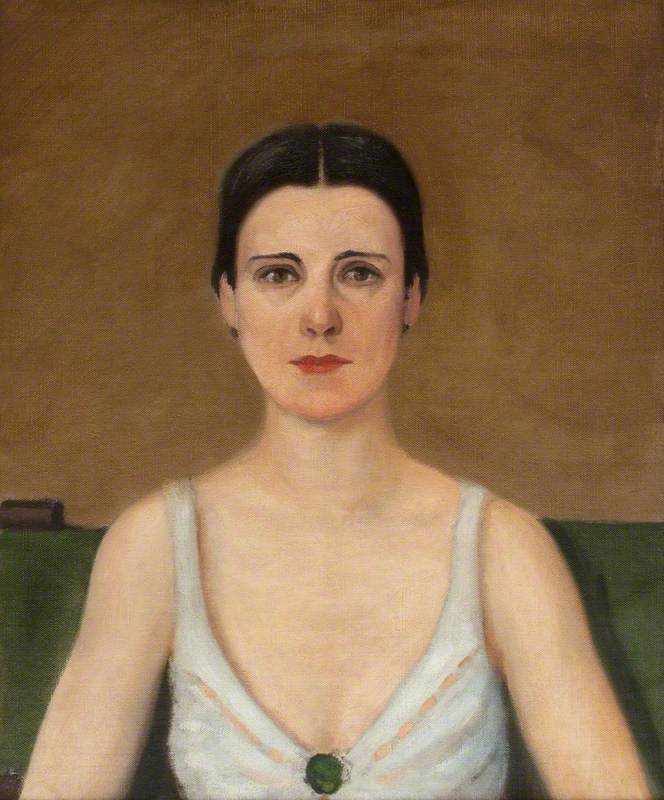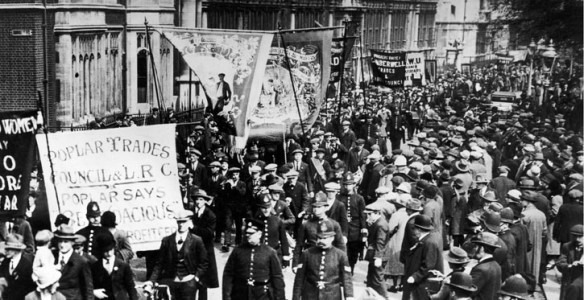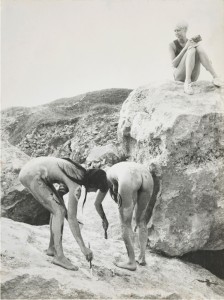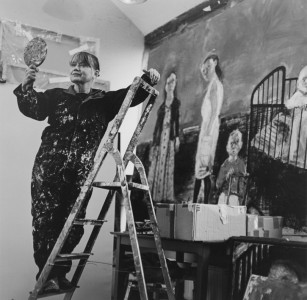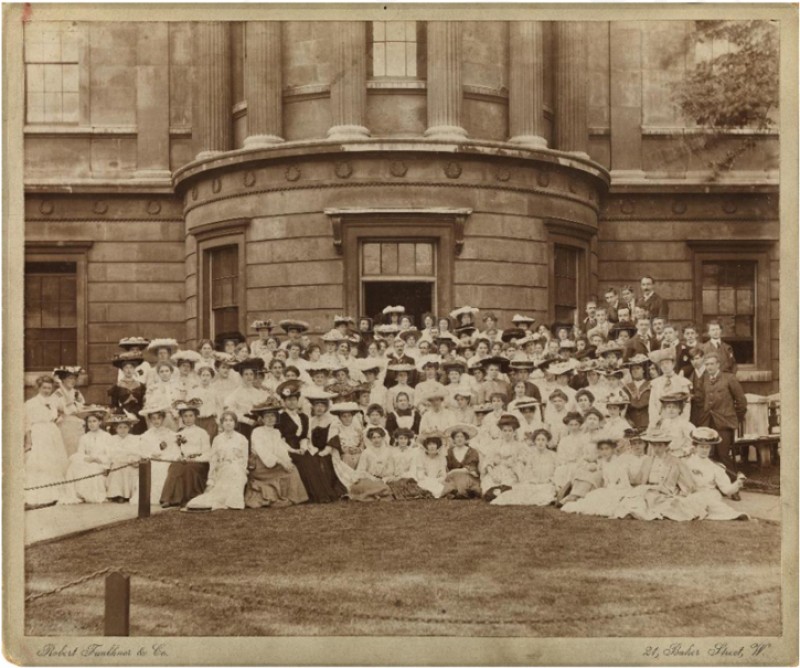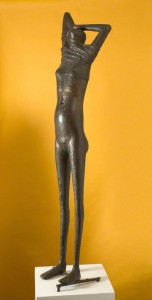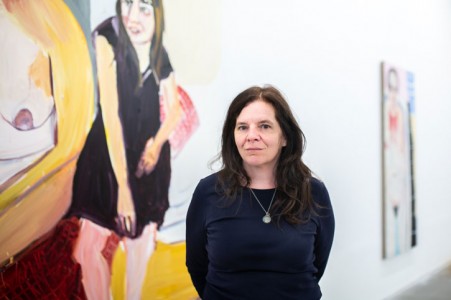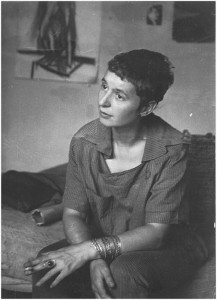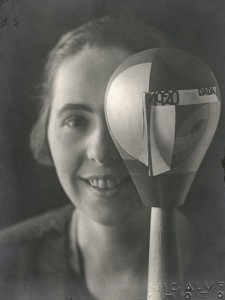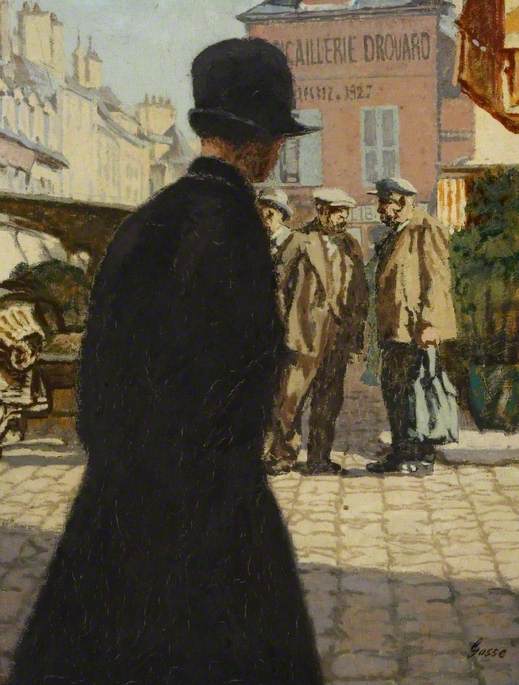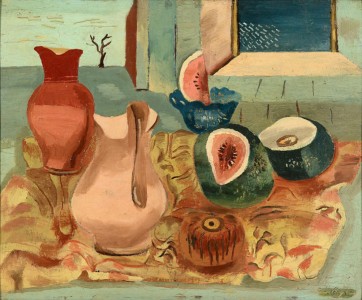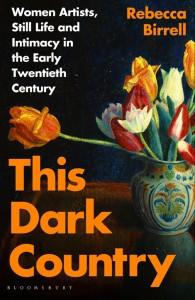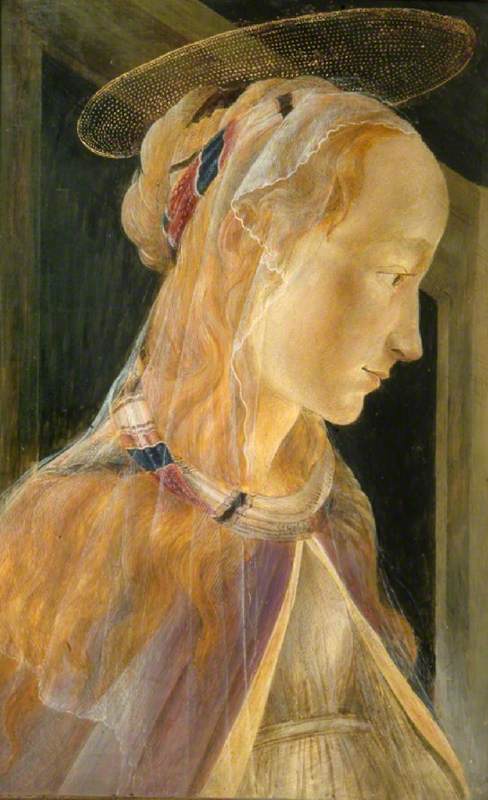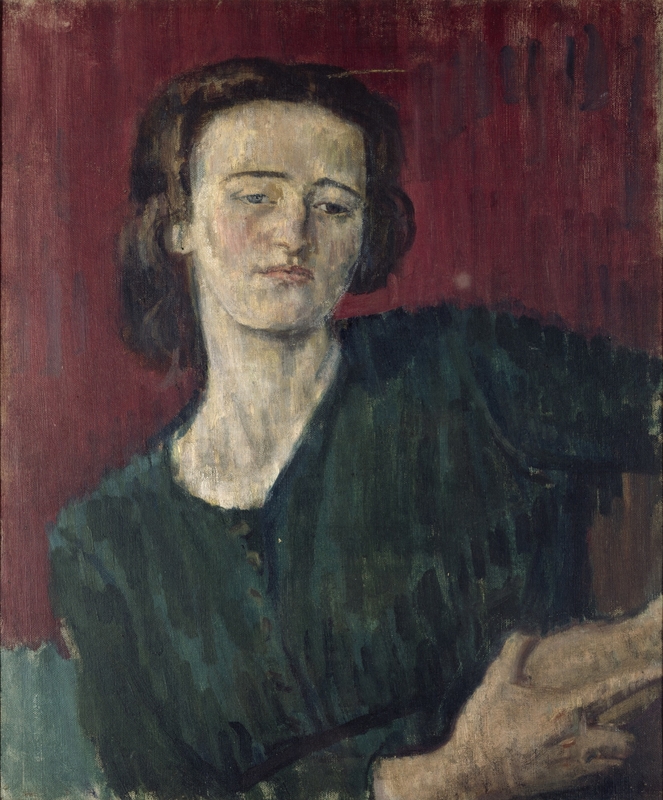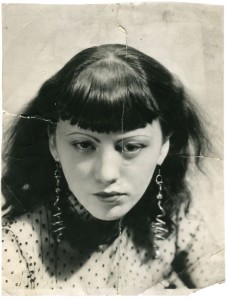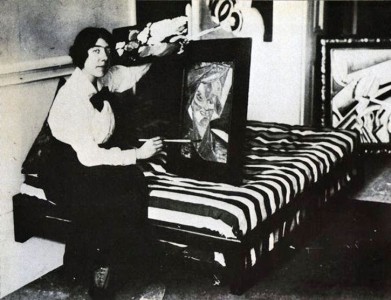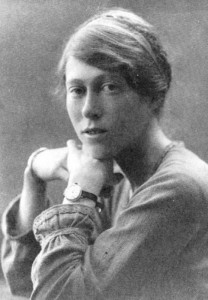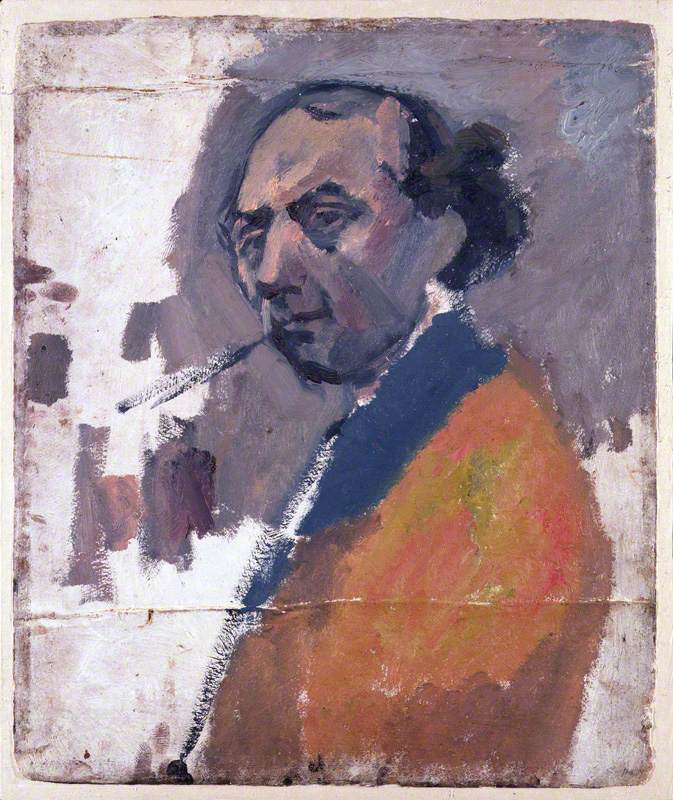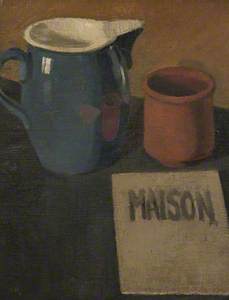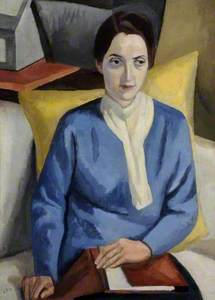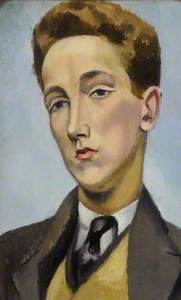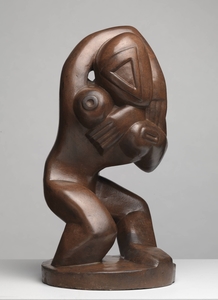Nina Hamnett (1890–1956) is one of few women artists to leave an autobiography.
The two volumes, Laughing Torso (1932), and its sequel, Is She a Lady? (1955) made her into a well-known name, albeit one recognised for the bohemian world she described rather than for her art. Among many famous and infamous artists of her day, Hamnett knew figures such as Amadeo Modigliani and the occultist Aleister Crowley.
'Laughing Torso: Reminiscences of Nina Hamnett' and 'Is She a Lady?: A Problem in Autobiography'
1932 and 1955, front covers of books by Nina Hamnett, published by Time Warner Books UK and Allan Wingate 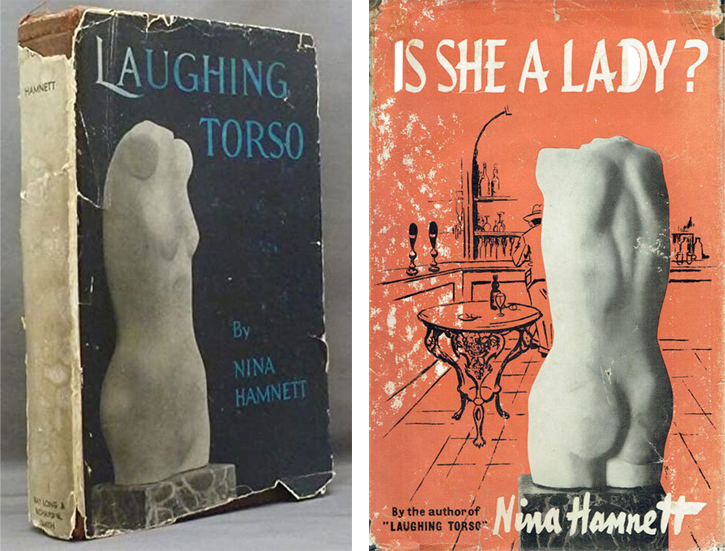
In fact, reading her story as a tale of the emergence of a young woman into the modern art world, her writing – breathless as it can be – creates a pithy, vivid and often amusing picture of what it felt like to throw off the constraints of the Edwardian lady and reinvent yourself as an artist.
She describes the reactions to casting aside her corsets: 'My grandmother and an elderly cousin said that it was indecent and disgraceful and women's backs were not strong enough to support themselves; I am now forty-one and my backbone has not yet crumpled up.'
For many women artists of this era, working from the life model often led to an exploration of ways to merge the body as lived, and the nude as an image in art. For example, see Gwen John and Paula Modersohn-Becker's nude self-portraits of the 1900s. Hamnett wrote that she had never looked at herself naked, her grandmother having insisted that she always dress and undress under her tent-like nightdress. Yet emboldened by drawing from the model at art school, she took off her clothes and began to sketch what she saw in the mirror. Her surviving nude drawings are beautiful, not because of their idealisation of the body or its sexual allure, but due to their immediacy and economy.
Standing Nude
1920, pencil drawing by Nina Hamnett (1890–1956) 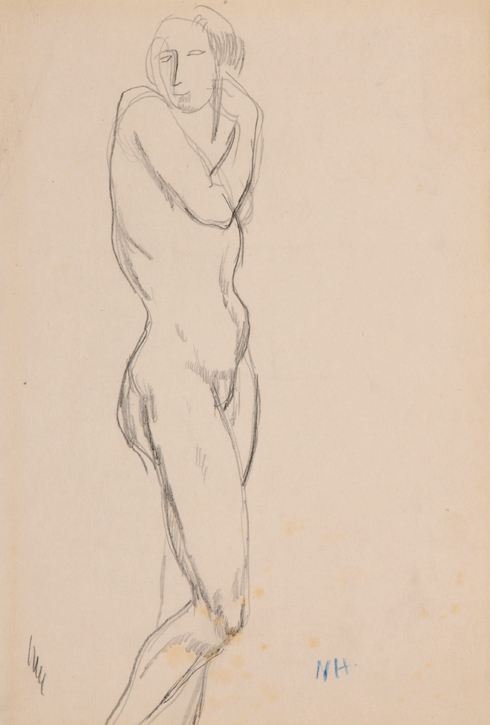
Finding the Royal Academy schools backward (she was appalled to find out that a gold medal-winning student there had never heard of Manet) she moved to the London School of Art. Among the many tutors there was William Nicholson, who, she said, was an excellent teacher.
Hamnett's own still life paintings owe an obvious debt to European Post-Impressionism in their tilted perspective and the unadorned heft of the objects – it is as if they are being grasped and weighed by the eye. Hamnett also signalled her artistic alliances in the titles of the magazine, pamphlet or book that make an appearance. The German art and literary journal, Der Sturm, features in one still life.
In another, the word 'Maison' appears as part of a stark arrangement of three simple objects painted in 1918, the sombre atmosphere redolent of the deprivations of the war years. Hamnett also designed and painted items for the modern home as part of the Omega Workshops, the interest in fine art as decoration again a shared concern with European modernists. Among this movement of artists included Maurice Denis and Édouard Vuillard, who designed everyday things: murals, screens, lampshades.
Interviewed in 1924 Hamnett declared: 'My ambition is to paint psychological portraits that shall represent accurately the spirit of the age.' Her paintings of women include Lady Constance Stewart-Richardson, the dancer and author.
Lady Constance Stewart-Richardson (b.1882)
1917
Nina Hamnett (1890–1956) 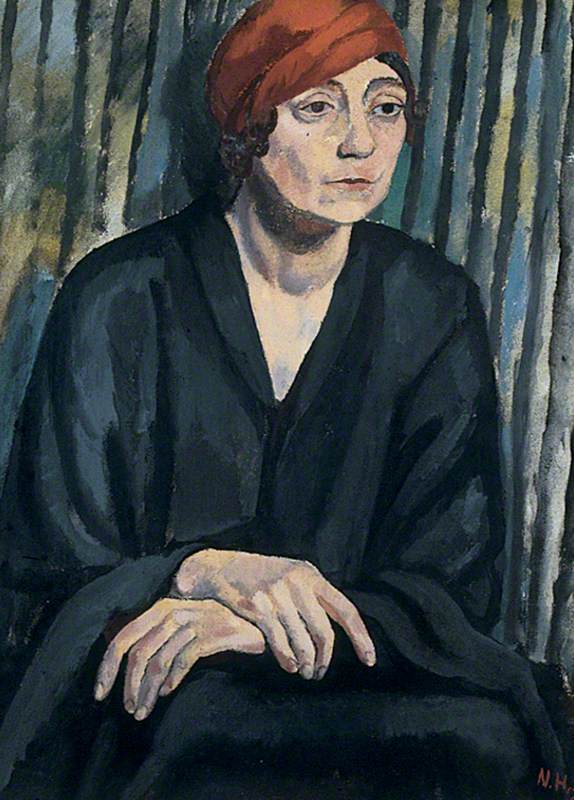
Stewart-Richardson's book Dancing, Beauty and Games (1913) extols the work of Isadora Duncan and 'dancing barefoot in the Greek style'. Hamnett portrayed her as a strong, unadorned physical presence with a stoical, even tragic, cast to her expression. Stewart-Richardson had been banned from attending court by Edward VII for performing in revealing costumes in the theatre, and her first husband was killed at the battle of Ypres.
In The Student (1917), Hamnett painted her fellow artist and Omega Workshops member, Dolores Courtney, who may have trained alongside Hamnett at the London School of Art.
The men Hamnett painted also forged new paths in their life and work.
Her painting of Horace Brodzky, the Jewish artist, and the first Australian to represent his home country at the Venice Biennale, is a striking composition with Brodzky's strong features, so emphatic as to appear carved, thrown into relief by the vertical lines of pink, ochre and black behind him.
Rupert Doone the dancer, choreographer and later partner of the painter Robert Medley, is shown with a long mask-like face, narrow-eyed and sharp planed, the pale tone of his cheeks contrasting with the darker neck and defined pink lips indicating that he might be wearing make-up.
Sir (Francis) Osbert Sacheverell Sitwell, 5th Bt
c.1918
Nina Hamnett (1890–1956) 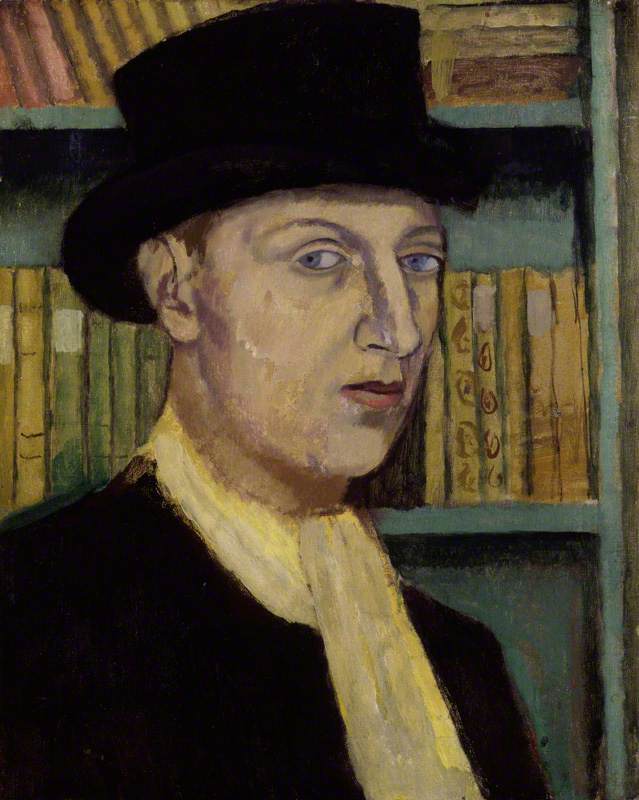
Writers Hamnett portrayed included Sir Osbert Sitwell, who she collaborated with in 1928 on a book about London's public sculptures (she made 32 drawings for it), and the poet W. H. Davies.
Hamnett has often been written about first and foremost as a subject for the art of others, from Henri Gaudier-Brzeska to Roger Fry to Walter Sickert, and for that reason, her work as a model takes last place here. But although it was not the main body of her achievement, it is worth mentioning the distinctive character of her contribution.
Dancer
(cast from the original of 1913) 1966–1967
Henri Gaudier-Brzeska (1891–1915) (posthumous cast) 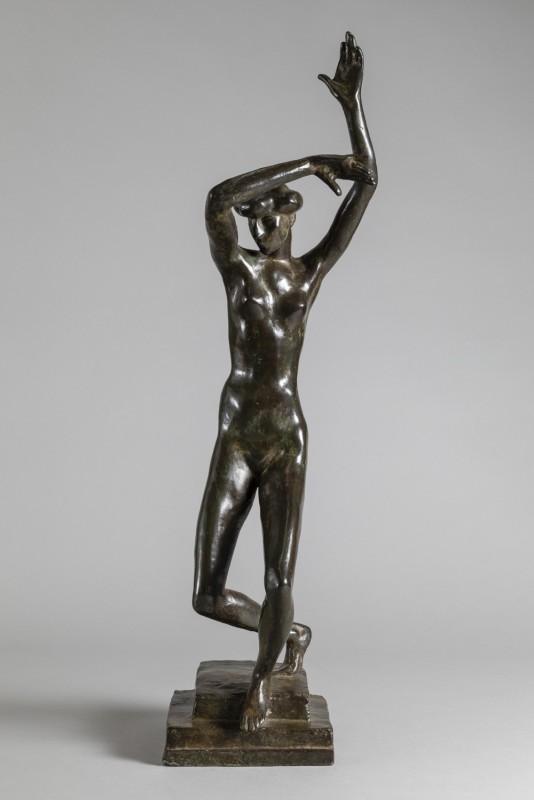
Gaudier-Brzeska's Dancer is a stunning evocation of a new female body type that emerged in the early twentieth century: lean and lithe in contrast to the languid voluptuousness that dominated Edwardian ideas of femininity.
Roger Fry's fine portrait (one of his best works) is an image of Hamnett as the epitome of a modern young woman: short-haired and with dress and cushion designed by fellow artist Vanessa Bell for the Omega Workshops.
The Little Tea Party: Nina Hamnett and Roald Kristian
1915–16
Walter Richard Sickert (1860–1942) 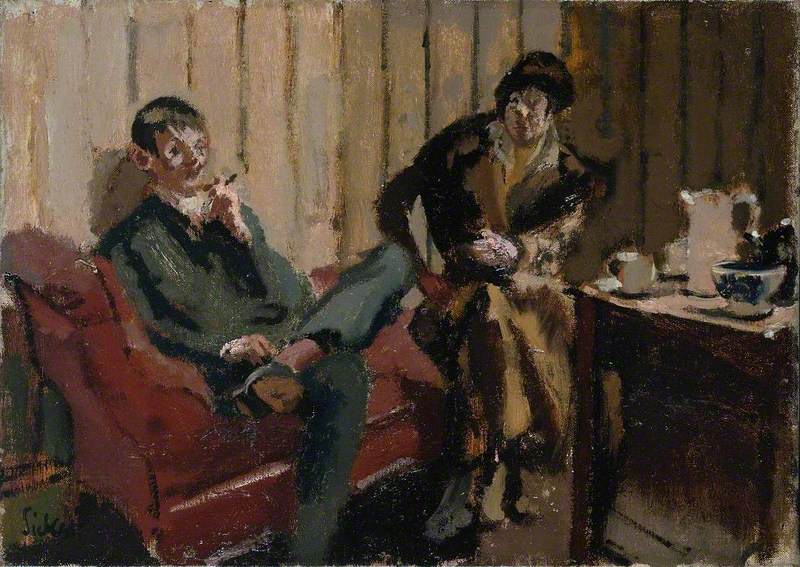
While in Walter Sickert's painting The Little Tea Party we see the artist's world of shabby studios, meals and cigarettes camped out in a corner, but even in this dour painting, Hamnett's dynamic pose arrests the eye, giving an intimation of how fascinating her company must have been.
Alicia Foster, curator


